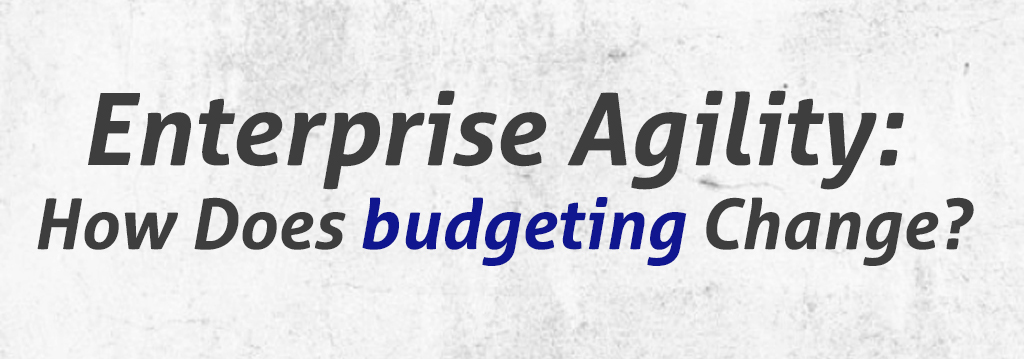
Category : Enterprise Agility
By Vineet Patni | 21 July 2022
Many Enterprises have a strict financial budget fixed for a year, generally called the ‘Annual Budget.’ This budgeting pattern has yet to evolve with the times. Considering an example of employee training that could add value to the product under development, the available budget is a primary constraint. The employees often need to wait for later quarters for their required training as the current quarter’s funding is exhausted. Ironically, when the training budget gets approved later, the employees’ need for learning no longer exists or is far less valuable.
The agility of budgeting should be in favor of adding value. The norms need to change, and budgeting needs to become flexible or adaptable as per the rolling forecast regarding opportunities and unavoidable fluctuations in prices or demand. The fluctuations depend upon the industry, product, or market we are dealing in and should be more than just standardized in the name of annual budgeting.
With the much-needed adaptability in budgeting, let us explore how we can incorporate it into our governance model. The first step is educating and coaching the budget approval authorities, like finance departments, about the inherent need for flexibility in today’s complex times. The second step is to frequently communicate the requirements to the finance department to avoid unnecessary delays in decision-making.
How to deal with fixed budgeting and still move toward enterprise agility?
Agility means responding to a changing situation. If things and situations around us are constantly changing, then the pertinent question is whether our budget should change or remain fixed. The good news is that we can fix our budget and still respond or adapt appropriately to new opportunities. There are different ways of dealing with a fixed budget, and a few are listed here:
- Share the point of view with the finance team to adopt agility and current business needs.
- To become dynamic in the allocation of budget, every enterprise needs to create a budget with room for flexibility per the rolling forecast.
- Utilize opportunities to add value to the product or the bigger purpose without worrying about the budget.
- Vary the scope. A Product Owner should know what is necessary now and what is not. Accordingly, they can take actions to synergize energies and efforts that can add value now, including allocating the budget to more valuable stuff now.
Every enterprise needs to have a clear discussion about the budget and the importance of agility. We live in the space of “I don’t know.” Everything is an assumption, and nothing is absolute truth. We need to experiment and learn with decisions taken by us. It is how we look at situations, and it becomes imperative for everyone to understand this phenomenon in depth. Remaining fixed in budget allocation for a long duration could lead to negative or severely damaging consequences.
About The Author:
Vineet Patni is the Founder and Principal Agile Coach at ScaleUp. An avid learner and a passionate facilitator, Vineet has been assisting enterprises and individuals in becoming truly Agile. Please feel free to connect with him at Vineet@ScaleUpConsultants.com .
Disclaimer: The opinions expressed in this post are the author’s own. The author welcomes and respects any difference of opinion.


Leave a Reply